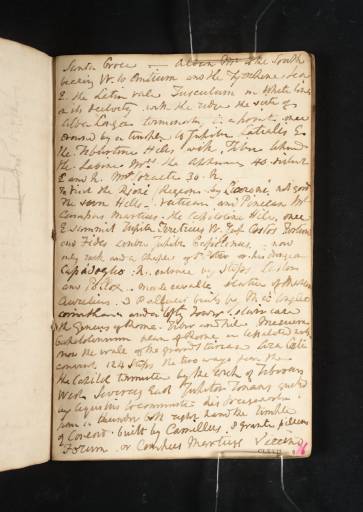References
How to cite
Nicola Moorby, ‘Notes by Turner from Eustace’s ‘A Classical Tour Through Italy’ c.1819 by Joseph Mallord William Turner’, catalogue entry, July 2008, in David Blayney Brown (ed.), J.M.W. Turner: Sketchbooks, Drawings and Watercolours, Tate Research Publication, December 2012, https://www

